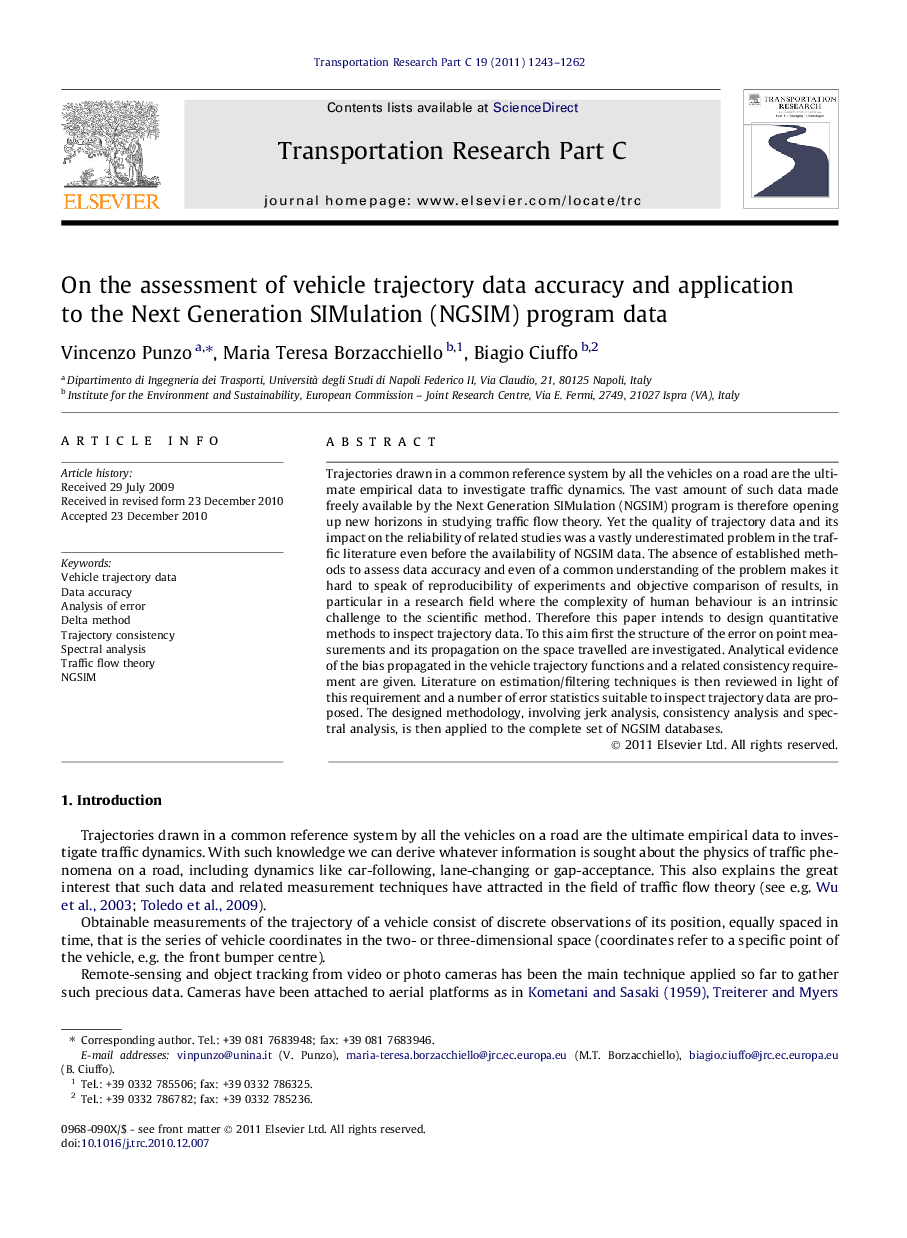| Article ID | Journal | Published Year | Pages | File Type |
|---|---|---|---|---|
| 525247 | Transportation Research Part C: Emerging Technologies | 2011 | 20 Pages |
Trajectories drawn in a common reference system by all the vehicles on a road are the ultimate empirical data to investigate traffic dynamics. The vast amount of such data made freely available by the Next Generation SIMulation (NGSIM) program is therefore opening up new horizons in studying traffic flow theory. Yet the quality of trajectory data and its impact on the reliability of related studies was a vastly underestimated problem in the traffic literature even before the availability of NGSIM data. The absence of established methods to assess data accuracy and even of a common understanding of the problem makes it hard to speak of reproducibility of experiments and objective comparison of results, in particular in a research field where the complexity of human behaviour is an intrinsic challenge to the scientific method. Therefore this paper intends to design quantitative methods to inspect trajectory data. To this aim first the structure of the error on point measurements and its propagation on the space travelled are investigated. Analytical evidence of the bias propagated in the vehicle trajectory functions and a related consistency requirement are given. Literature on estimation/filtering techniques is then reviewed in light of this requirement and a number of error statistics suitable to inspect trajectory data are proposed. The designed methodology, involving jerk analysis, consistency analysis and spectral analysis, is then applied to the complete set of NGSIM databases.
Research highlights► Quantitative methods to inspect accuracy of trajectory data. ► Analysis of the measurement error structure and criteria for consistency of trajectories. ► Accuracy assessment of all the NGSIM datasets based on jerks’ analysis, consistency analysis and spectral analysis. ► Steps to process NGSIM data in order to remedy the errors discovered.
